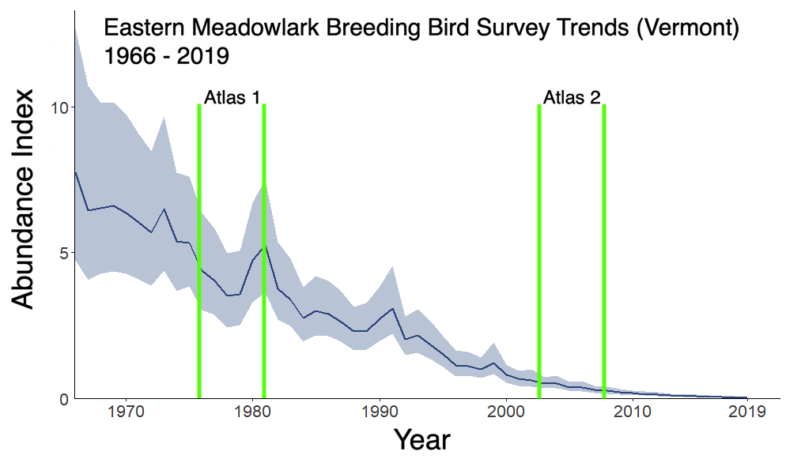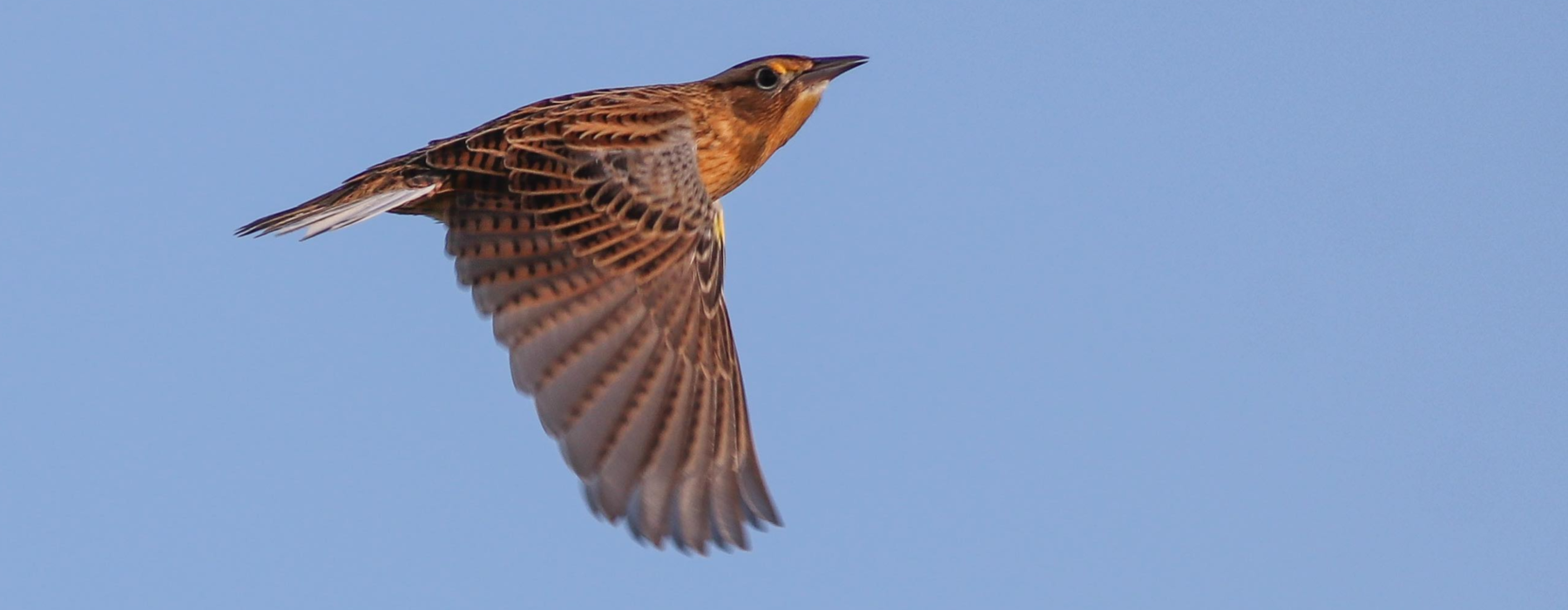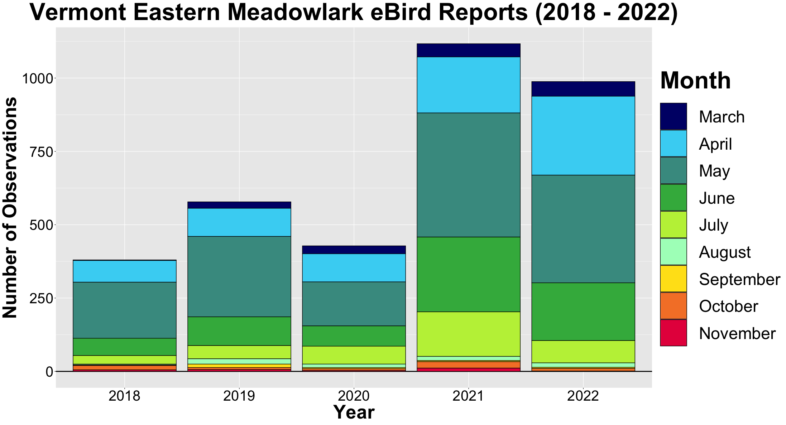VCE is leading the charge in keeping this songbird on the Vermont landscape through outreach, monitoring, and community-sourced data.
This large member of the Blackbird family (Icteridae) is a favorite of birders for their flashy yellow breasts and soft, whistled song. The New England/Mid-Atlantic population has declined by >95% over the last 50 years due to a combination of anthropogenic threats.
Eastern Meadowlark, which are listed as Threatened in Vermont (as well as Canada and New Hampshire), are undergoing an estimated 8.7% annual population decline in Vermont, 8.8% in New Hampshire, and 2.5% across the continent (Sauer et al. 2019). The second Vermont Breeding Bird Atlas (VBBA; Renfrew 2013) similarly showed a significant decrease of 55% from the first atlas. Additionally, the species’ spatial distribution has changed markedly in the past half century; the first VBBA found that 27% of Vermont’s Eastern Meadowlark population resided in the Champlain Valley, compared to over 50% during the second VBBA (Renfrew 2013).

Eastern Meadowlark abundance in Vermont, overlaid with the timing of the Vermont Breeding Bird Atlases. USGS Breeding Bird Survey 1966 – 2019.
With the imminent listing of Eastern Meadowlark as Threatened in Vermont, VCE launched the Vermont Eastern Meadowlark Blitz in 2021 to gather information on the status and distribution of meadowlarks across the state. More than 800 meadowlark observations were submitted to eBird during the breeding season (May, June, and July) of 2021, almost a three fold increase over 2020. Despite the increased number of observations, it only confirmed the precarious decline of Eastern Meadowlark statewide. With an estimated population size of less than 100, it’s among the rarest breeding birds in the state.
This population downtrend is primarily due to changes in land use. As Vermont’s forests have reclaimed the land, hayfields have become fewer and fragmented, resulting in wide-spread habitat loss. Additionally, as Vermont’s agricultural industry shifted from sheep to dairy, haying became increasingly intensive and frequent. Today, Vermont’s dairy industry is rapidly changing; it continues to industrialize, farms with over 700 head of cattle increased by 89% between 2011 and 2018 (Claro et al. 2021), and graze less area, ~9% less farmland was grazed between 1997 and 2017. When farms close and their fields are left to go fallow, subdivided, developed, or transitioned to row crops, their habitat value for meadowlarks and other grassland birds inevitably decreases to a point where they become uninhabitable.
Citations & Further Reading
Claro, J., S. Danly, B. Warren, E. Kahler, A. Willard, and K. Harris. 2021. Vermont Agriculture and Food System Strategic Plan 2021-2030.
Renfrew, R.B. ed. 2013. The Second Atlas of Breeding Birds of Vermont. University Press of New England, Hanover, NH. 548 pp.
Sauer, J. R., D. K. Niven, J. E. Hines, D. J. Ziolkowski, Jr, K. L. Pardieck, J. E. Fallon, and W. A. Link. 2019. The North American Breeding Bird Survey, Results and Analysis 1966 – 2019. Version 2.07.2019 USGS Patuxent Wildlife Research Center, Laurel, MD.
– – – – – – – – – – – – – – – – – –
Banner image © Nick Tepper


